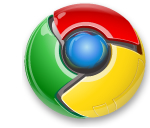 Taking advantage of the announcement of new features in Google Chrome and the launch of the Chrome Web Store, Google demonstrated a new stage of development of Google Chrome OS, the operating system for Netbooks and other devices.
Taking advantage of the announcement of new features in Google Chrome and the launch of the Chrome Web Store, Google demonstrated a new stage of development of Google Chrome OS, the operating system for Netbooks and other devices.
“When you open a netbook with Chrome, the first thing to do is to connect to the Internet. Then, you take a picture of yourself. That done, you are ready to start computing. Even in full standby mode, returning to the Internet is faster than the user can finish typing, ”said Sudar Pichai, vice president of product management.
When you uninstall an application on one machine, it will disappear on another machine as well. Application changes propagate on all Chrome machines within 20 seconds. In the case of shared computers, Chrome offers different profiles that can be customized with different applications and information.
In case a friend wants to use your computer, Chrome OS offers a guest profile where everything is private. When the guest closes their session, the data is deleted, just like in the Chrome browser incognito window.
What happens when the internet goes down?
Chrome OS is focused on the web but Google knows that connection problems can occur. Google Docs, for example, is capable of working even offline. When the connection returns, the changes are synchronized (the Google Docs team is still working on improving functionality).
Regarding games and other applications, Chrome OS will work with caching, storing games in HTML5 to work in situations where the user’s connection presents problems or is nonexistent.
“Computers are not useful when they are not connected, so we are working to put technology in place to help users always stay connected,” said Pichai.
“Each notebook with Chrome OS will come equipped with cellular connectivity through an agreement with Verizon. The plan offers 100MB of data per month for two years, ”explained the executive.
Safety
With Chrome OS, updates are automatic, apps run in separate environments (sandbox) and all data is encrypted by default. There is also a “verified boot” where the operating system is locked and prevents it from being changed by malicious apps.
To solve the problem of companies that need to use proprietary software, for example, Microsoft Excel, Google announced that it is working with Citrix to make Chrome OS perfectly compatible. Citrix is known for running applications like SAP, CAD and others in the cloud instead of the user’s computer.
Google breaks the Page Law
In June 2009, Sergey Brin, co-founder of Google, said that Google was working on hoping to break the fundamentals of “Page Law”By making software faster over time, without any hardware upgrades.
Cited as a tribute to colleague Larry Page, also a founder of Google, the law created by the executive states that there is a wrong evolution in software every 18 months, which makes it twice as slow (and worse in certain cases).
In the case of Chrome OS the story is quite different. Google promises to make the operating system faster and faster without the user having to change the hardware.

How to buy a Netbook with Chrome?
There is still no date for the release of Chrome OS to the market. According to Pichai, the system still needs further development. An example of this is the lack of USB support.
Among current partners, Google already has Acer, Samsung and Intel that promise to bring the first device to the market in 2011. Internally, several employees have already been allocated to test the system. Everything in the Google “Dogfood” model of being.
To reach consumers, Google initiated a pilot program that offers American users the possibility to receive a notebook at home for testing. “We removed the caps lock buttons to improve comments across the web,” said the executive, laughing.
Regarding corporate customers, Google has partnered with Virgin America, Logitech, American Airlines and Kraft so that its employees can use the operating system in the business world.

Document Printing
Driven by the evolution of web applications and the Google Chrome OS itself, Google started a project in which it aims to offer a printing experience as natural as traditional native applications.
“With the proliferation of mobile devices connected to the web, such as Google Chrome OS and other mobile operating systems, we do not believe that it is feasible to build and maintain complex print subsystems and drivers for each platform,” explained Google about the initiative.
Learn more about Google Cloud Print.
